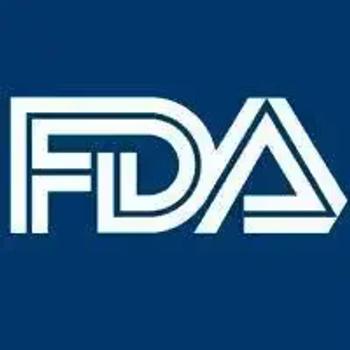
Study: More evidence of T therapy’s safety in some PCa patients
Testosterone therapy in hypogonadal men with prostate cancer who have had definitive treatment and in those on surveillance appears to be safe, according to a new study.
Testosterone therapy in hypogonadal prostate cancer patients who have had definitive treatment and in those on active surveillance appears to be safe, according to a new
Urologists and others have been cautious about using testosterone therapy in men with prostate cancer since the early 1940s, when Huggins et al published research suggesting reductions in testosterone caused metastatic prostate cancer to regress, while exogenous testosterone administration caused the cancer to grow
In this new study, published in the
In a median 41-month follow-up, they found increases in testosterone and PSA levels among all the prostate cancer patients on testosterone therapy. PSA increased among active surveillance patients, but none were upgraded to higher Gleason scores, nor had they progressed to definitive treatment. While none of the radical prostatectomy patients experienced biochemical recurrence, three of the radiotherapy patients did. Whether those cases of biochemical recurrence resulted from testosterone therapy or the natural disease course is unclear, the authors write.
Also see:
The authors report PSA velocity was 0.001 ug/L/yr in the radical prostatectomy group, 0.12 ug/L/yr in the radiotherapy group, and 1.1 ug/L/yr among those on active surveillance.
Still, while the evidence points to a change in the current treatment approach, the authors note their trial is not randomized or placebo-controlled and is retrospective. If future randomized, controlled trials confirm these and other results, urologists might feel more comfortable using testosterone therapy in hypogonadal men with treated prostate cancer or men on active surveillance.
Have you read -
Lead author Jesse Ory, MD, of Dalhousie University, Halifax, Nova Scotia, says that he has seen urologists take a mix of approaches regarding the use of testosterone therapy in men after prostate cancer.
“Some urologists are hesitant to prescribe testosterone therapy to men with treated prostate cancer and are waiting for data from a prospective, randomized, controlled trial before making any definitive choices on the matter. This approach is understandable, given the lack of level 1 evidence,” he said.
“However, the majority of the urologic oncologists I have worked with do practice a cautious, measured approach to the matter, based on the existing evidence. In patients with symptoms of hypogonadism and a low serum testosterone, who have been treated for prostate cancer and have an undetectable or stable PSA (often for at least 6 months), the subject is broached,” added Dr. Ory, who worked on the study with S. Larry Goldenberg, MD, and co-authors.
Dr. Ory says initial patient visits involve an open discussion about the risks and benefits of testosterone in this context and the need for closely monitored therapy. The patient subgroups whom urologists seem the most comfortable treating with testosterone therapy are those with an undetectable or stable PSA after radical prostatectomy or radiation therapy, followed by those on active surveillance, according to Dr. Ory. Extreme caution is used in men at a high risk of recurrence or progression.
Also see:
“The low numbers of patients studied on active surveillance, as well as the presence of active prostate cancer cells in situ makes many nervous,” he said. “I suspect this will only dramatically change once we have prospective, randomized, controlled trials to support the many retrospective studies done thus far.”
The most surprising finding in this study for Dr. Ory and colleagues was the lower incidence of biochemical recurrence compared to the rates seen in larger trials.
Read:
“After looking into this further, there is some very early biochemical research that may suggest that being eugonadal is the most ‘protective’ for the prostate and slows growth of any active prostate cancer versus being hypogonadal,” he said, citing a study in the
The difference in biochemical recurrence, while interesting, should be viewed with caution, according to Dr. Ory.
“First of all, our average follow-up time is 41 months, which is less than what was done in [other studies]. This limits direct comparison,” he said. “Secondly, one could reasonably argue that our N is too small to expect to see a similar trend. These are valid criticisms, yet do not discount the findings entirely.”
At this point, the safest approach is a cautious, individualized approach, Dr. Ory says.
“In those who want to offer a trial of therapy, the body of research on this topic should be grounds to reassure our colleagues that testosterone therapy in this population is reasonable and safe. They should be reassured by over a dozen studies done to this point: All have either showed an equal or lower rate of biochemical recurrence, with no trials showing increased risk,” he said.
More from Urology Times:
Newsletter
Stay current with the latest urology news and practice-changing insights — sign up now for the essential updates every urologist needs.















